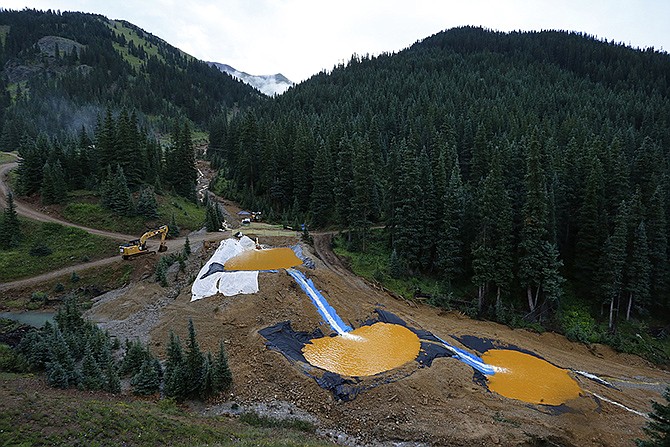DENVER (AP) - A probe of a mine waste accident in Colorado that fouled rivers in three states with arsenic, lead and other toxic substances has found further evidence that government workers knew a spill from the gold mine was possible, according to documents released Thursday by a U.S. House committee.
Hays Griswold, a U.S. Environmental Protection agency official in charge of the Gold King mine at the time of the August accident, said in an email that he "personally knew" the plugged, inactive mine could contain large volumes of water.
The email was sent Oct. 28 to other EPA officials. It was obtained Thursday by the Associated Press as the House Natural Resources Committee released the findings of its Republican-led probe.
An EPA cleanup crew triggered the spill during excavation work at the mine's entrance, unleashing a 3 million-gallon deluge that contaminated rivers in Colorado, New Mexico and Utah and highlighted the dangers posed by tens of thousands of abandoned mines across the U.S.
The Colorado release dumped more than 880,000 pounds of heavy metals into Colorado's Animas River, forcing the closure of downstream public water systems until the plume passed and raising concerns about long-term environmental impacts.
"I personally knew it could be holding back a lot of water, and I believe the others in the group knew as well," Griswold wrote in the email.
EPA spokeswoman Nancy Grantham said the agency was reviewing the House committee's findings and had no further comment at this time.
The committee's ranking Democrat, Rep. Raul Grijalva of Arizona, said Republicans were using the EPA's role in the accident to shift responsibility away from the mining industry for toxic mines that have been abandoned by owners.
The spill occurred when workers for EPA and its contractor, Environmental Restoration LLC, started excavation work that was intended to allow them to safely drain the mine.
An Interior Department investigation pinned responsibility on the EPA for not checking to see if the mine held pressurized water. EPA officials previously said workers on site determined there was no or low pressure from water backed up inside the mine.
The email from Griswold suggests the determination of low water pressure was based in part on mistaken assumptions about the location of the top of the mine's buried entrance, known in mining as the brow.
The excavation work was intended to clear away debris blocking the entrance before the mine was to be drained at a later date, he wrote.
"We and or I particularly thought we were four or maybe five feet above the brow," Griswold wrote. "However, as it turned out we inadvertently got to probably within a foot or two of the brow. That proved to be too close when rock at the exposed face crumbled out, providing an outlet for the water."
Griswold's email also raised new questions about the accuracy of the investigation by the Interior Department's Bureau of Reclamation, which examined the causes of the spill. The email used such terms as "patently false" and "mischaracterization of the facts" to describe parts of the report.

